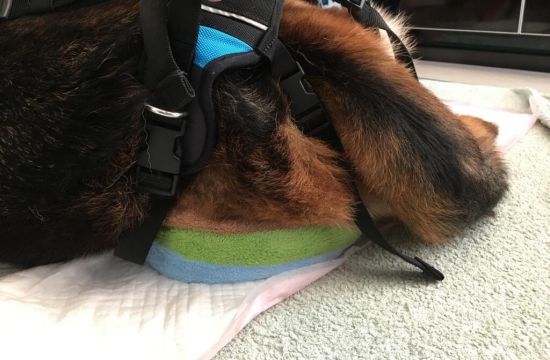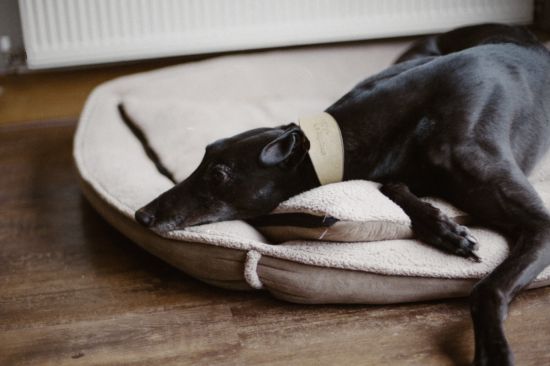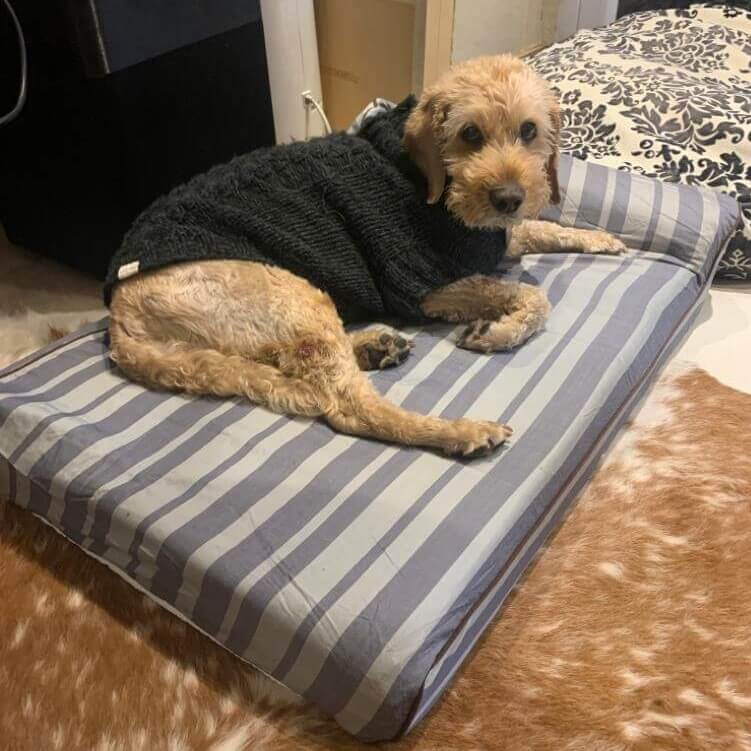
Tips: Senior pets and pressure sores- bedding advice
Pressure sores should not be confused with thickened skin or callouses, which also occur over bony points, often in larger breed dogs, but are a defensive response to protect these areas. Pressures sores, or pressure ulcers, are physical damage to the skin areas where the blood supply is restricted due to external pressure. This occurs most often as our doggy friends age or develop conditions where they may be unable to change their position easily. When they spend more time lying down in the same position, pressure sores (pressure ulcers) may start to develop.
What do early pressure sores look like?
At the initial phase of pressure sores, the first thing you will notice is the hair thinning around the bony prominences. They are commonly seen at hip, elbow, hock (ankle) and knee joints of a dog. It is important to note that they can still occur in dogs who have already developed thick calloused skin earlier in their lives. If unprotected, the shin may become red and inflamed, due to the pressure applied from the surface of the bed/ floor.
What makes pressure sores so concerning?
With the repetitive pressure, rubbing and trauma to the surface of the floor and bedding, the broken skin turns into a wound which will continue to worsen, resulting in infection and open weeping wounds that are unable to heal. This is painful and causes great discomfort to our four-legged friends and greatly affects their quality of life. It is extremely difficult to treat once it occurs and requires significant amount of care and treatment for the wounds to heal. Therefore, prevention is the key!
What you can do to prevent pressure sores:
- Barrier Cream: A good barrier cream such as Vaseline or Sudocrem for human babies can be applied to the area to protect the skin from damage. You may clean the area with warm saline (salt water) and wipe it dry, cool blow dry and then apply a thin layer of cream. Don’t let the skin become too soft or wet.
- Keep it dry: Prevent urine scald as much as possible- Often pets that are unable to get up themselves are unable to control when they urinate. Use incontinence pads or male belly wraps to soak away the wet urine. Bacteria and moisture are not helpful!
- Positioning: Physically change the side your pet lies on at least every 3-4 hours during the day to ensure good blood supply. Get your pet standing (even supported) if possible, to allow the areas a break from the pressure.
- Massage: Ensure blood can circulate, gently massage the skin and tissues under the skin. Check out the snippet from our Online Massage course for simple massage techniques!
- Use thick padded bedding: Prevent lying on hard flooring where possible and provide cushioning over bony prominences. Do provide a firm and supporting orthopaedic bed with cleanable antibacterial and water resistance covers to wick moisture away. Sometimes even a good bed is not enough, and you will need to add additional support, such as soft ring cushions, or a donut-shaped support to lift the area and avoid any contact with the bony point and the bed or floor.

A donut-shaped cushion underneath Barney's hip joint helps to lift the pet away from constant contact with the floor or bedding.
What to look for in an orthopaedic dog bed?
While searching for a suitable bed for your dog, ask yourself these questions: Can my dog get on and off their bed easily, without help? Does the bed provide enough padding to protect pressure sores? Can my dog move around on the bed easily? From that, we suggest a few key factors to consider while choosing a suitable bed especially for an older dog.
- Larger than the dog – your dog should be able to change position easily and stretch out on the bed.
- Comfortable and supportive – make sure the bed is firm enough that your dog can walk on it without tripping or stumbling. An over soft bed is difficult for older pets with weakness or balance issues.
- Stable - Use a non-slip underlay underneath the bed to stop it from moving. Your dog will need extra effort to get on or off the bed on slippery flooring.
Time to get a new bed if your pet’s bed:
- Just fits – that's too small; dogs needs to stretch and able to turn
- Has high edges – Increased chance of tripping and adds pressure to joints
- In hammock style – insufficient support for arthritic or larger dogs and a large step to get onto
- Too soft and unstable – it will be hard for your dog to get up after lying down

A bed too small will leave your pet's limbs hanging
Still unsure? Consider our Silver+ Contour Memory Foam Dog Bed. This will be the dream bed for your dog! The memory foam mattress provides a firm and supporting structure by reducing the number of pressure points. It has a both a waterproof inner cover and antibacterial cover. Remember to pick a size that is big enough for your dog to stretch out and have sweet dreams!

Sir Ralph in his comfy yet supportive memory foam bed!
相關產品
This site is protected by reCAPTCHA and the Google Privacy Policy and Terms of Service apply.








